
ITEP's Research Priorities
- 2025 tax debate
- Blog
- Cannabis Taxes
- Corporate Taxes
- Corporate Taxes
- Earned Income Tax Credit
- Education Tax Breaks
- Estate Tax
- Federal Policy
- Fines and Fees
- Immigration
- Income & Profits
- Income Taxes
- Inequality and the Economy
- ITEP Work in Action
- Local Income Taxes
- Local Policy
- Local Property Taxes
- Local Refundable Tax Credits
- Local Sales Taxes
- Maps
- News Releases
- Other Revenues
- Personal Income Taxes
- Property & Wealth
- Property Taxes
- Property Taxes
- Publications
- Refundable Tax Credits
- Sales & Excise
- Sales, Gas and Excise Taxes
- Sales, Gas and Excise Taxes
- SALT Deduction
- Select Media Mentions
- Social Media
- Staff
- Staff Quotes
- State Corporate Taxes
- State Policy
- State Reports
- States
- Tax Analyses
- Tax Basics
- Tax Credits for Workers and Families
- Tax Credits for Workers and Families
- Tax Guide
- Tax Principles
- Tax Reform Options and Challenges
- Taxing Wealth and Income from Wealth
- Trump Tax Policies
- Who Pays?
Florida Policy Institute: Dream Act: What’s at Stake for Florida?
December 20, 2017
There are 72,000 young immigrants who were potentially eligible for DACA that call Florida home. They currently contribute a total of $78 million to local and state taxes annually through sales and excise taxes, property taxes and income tax. Read more here
The Commonwealth Institute: Dream Act Would Boost Virginia Families, Communities, State Economy, and Tax Revenues; Revoking DACA Hurts All
December 20, 2017
There are 30,000 young immigrants who were potentially eligible for DACA and call Virginia home. They currently contribute a total of $29.3 million to local and state taxes annually through sales and excise taxes, property taxes and income tax. Read more here
NC Policy Watch: Devastating consequences if Congress fails to replace DACA in three months
December 20, 2017
State and local government coffers would also take a hit if Congress fails to pass the Dream Act, or another effective solution. The Institute for Taxation and Economic Policy estimates that current DACA recipients pay almost $58 million in state and local taxes, contributions which could grow to $78 million if the Dream Act were […]
Center for Public Policy Priorities: The National Dream Act: What’s at stake for Texas?
December 18, 2017
Researchers estimate that approximately 177,000 young Texas immigrants are potentially eligible for DACA, and they currently contribute a total of $241 million to local and state taxes annually through sales and excise taxes, property taxes and income tax. Without the national Dream Act, Texas can expect to lose at least $79 million in state and […]
Minnesota Budget Project: 4 Reasons DACA should be restored ASAP
December 18, 2017
DACA results in increased economic activity in our communities and increased tax revenues. DACA recipients in Minnesota contribute an estimated $15 million in state and local taxes annually. Read more here
Corker Claims Provisions Benefiting Him Could Not Have Changed His Vote Because He Never Read the Bill
December 18, 2017 • By Matthew Gardner
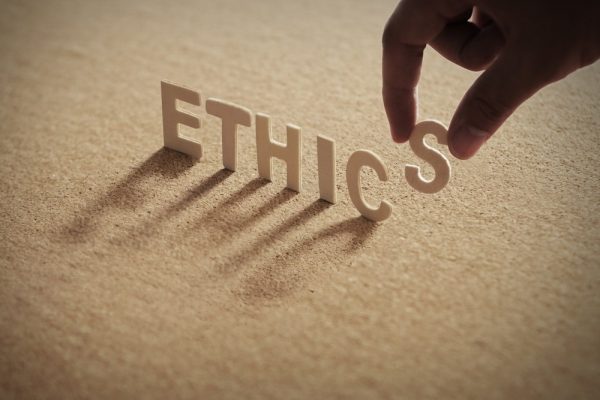
Many Republicans who had previously claimed to be deficit hawks have been cheerfully supportive of major tax-cutting legislation as it has moved forward this fall. But one Republican Senator, Bob Corker of Tennessee, has taken a defiant stance on the issue, insisting that “passing off increased debt to future generations” would be a deal-breaker for him. When the Senate passed its version of the tax plan last week, Corker was the only Republican to vote No.
Final GOP-Trump Bill Still Forces California and New York to Shoulder a Larger Share of Federal Taxes Under Final GOP-Trump Tax Bill; Texas, Florida, and Other States Will Pay Less
December 17, 2017 • By Meg Wiehe
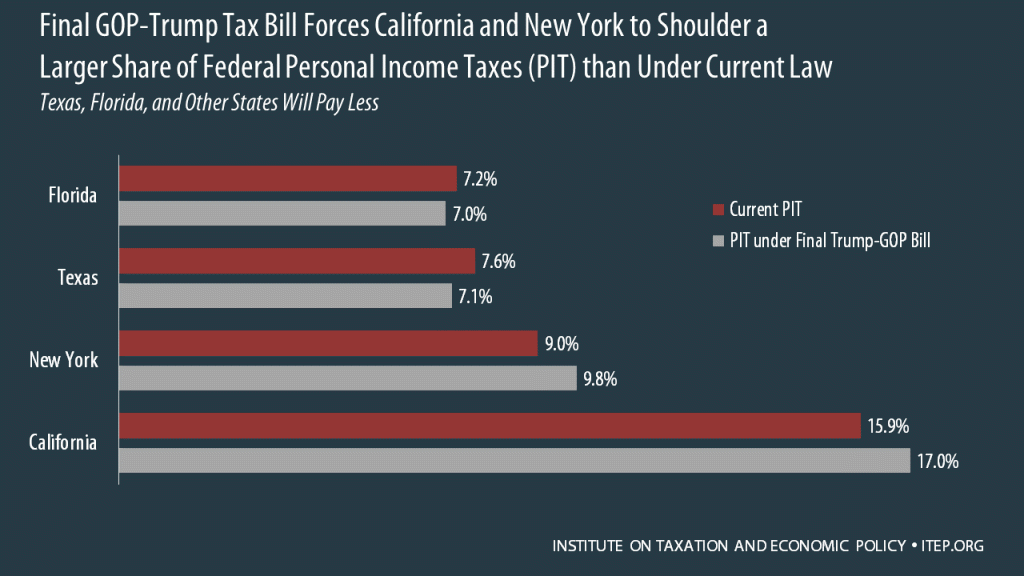
Residents of California and New York pay a large amount of the nation’s federal personal income taxes relative to their share of the population. As illustrated by the table below, the final GOP-Trump tax bill expected to be approved this week would substantially increase the share of total federal personal income taxes (PIT) paid by both states. Connecticut, Maryland, Massachusetts, and New Jersey would also see their share of federal PIT increase.
GOP Leaders Scrounge Up Money to Lower Top Tax Rate for the Rich But Not to Help Low-Income Working Families with Children
December 15, 2017 • By Meg Wiehe
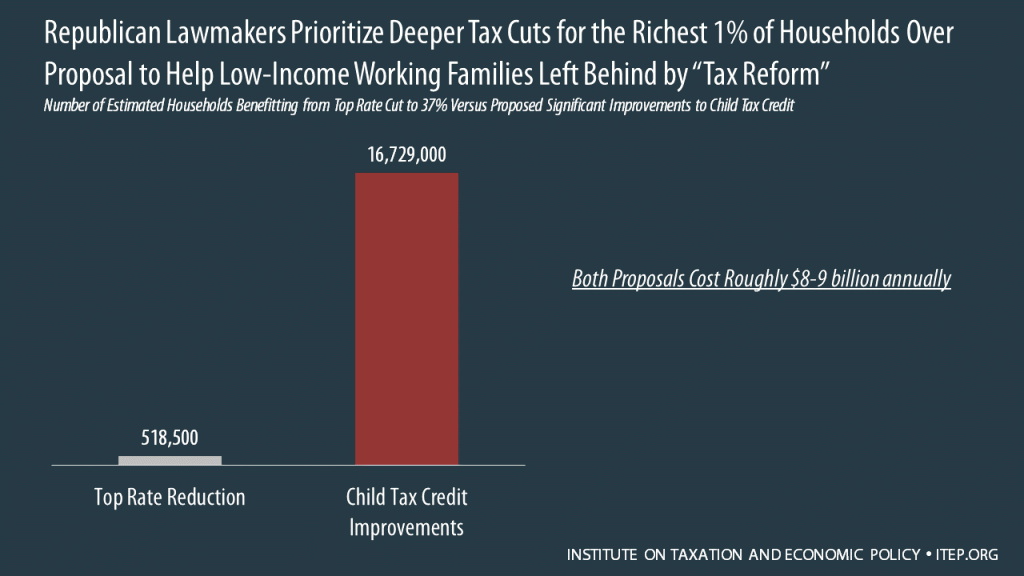
Republican leaders who rejected a proposal to have corporations pay a single percentage point higher tax rate to benefit families with children have tapped the exact same source of savings to provide more breaks for the richest 1 percent of taxpayers. The table below compares the number and share of households nationally and in all 50-states who would benefit from the proposal to reduce taxes for working families with children versus the ”compromise” to cut the top individual tax rate -- below either the House or Senate version – to 37 percent for couples with incomes above $1 million.

As 2017 draws to close, Congress has yet to take legislative action to protect Dreamers. The young undocumented immigrants who were brought to the United States as children, and are largely working or in school, were protected by President Obama’s 2012 executive action, Deferred Action for Childhood Arrivals (DACA). But in September, President Trump announced that he would end DACA in March 2018. Instead of honoring the work authorizations and protection from deportation that currently shields more than 685,000 young people, President Trump punted their lives and livelihood to a woefully divided Congress which is expected to take up legislation…
Updated Tax Contributions of Young Undocumented Immigrants
December 13, 2017 • By ITEP Staff
In September 2017, US Citizenship and Immigration Services released updated enrollment data for the program Deferred Action for Childhood Arrivals (DACA). The updated data included estimates of the number of former DACA enrollees that were now legal permanent residents and those that failed to reapply or their reapplication was denied. The table below provides updated estimates of their tax contributions.
Charitable, Property Tax, and Mortgage Interest Deductions Would Be Wiped Out for Two-Thirds of Current Claimants Under Congressional Tax Plans
December 7, 2017 • By Carl Davis
In the ongoing debate over major federal tax legislation, there is significant focus on how House and Senate bills would eliminate the deduction for state income tax payments and cap the deduction for property taxes at $10,000 per year. At the same time, tax writers have retained deductions for charitable gifts and mortgage interest with what appear to be comparatively minor changes, at least at first glance.
Fiscal Policy Institute: Dream Act: What’s At Stake for New York
December 1, 2017
There are 76,000 young immigrants who were potentially eligible for DACA that call New York home. They currently contribute a total of $115 million to local and state taxes annually through sales and excise taxes, property taxes and income tax. Read more
A Corporate Tax Cut Would Benefit Coastal Investors, Not the Heartland
November 30, 2017 • By Carl Davis
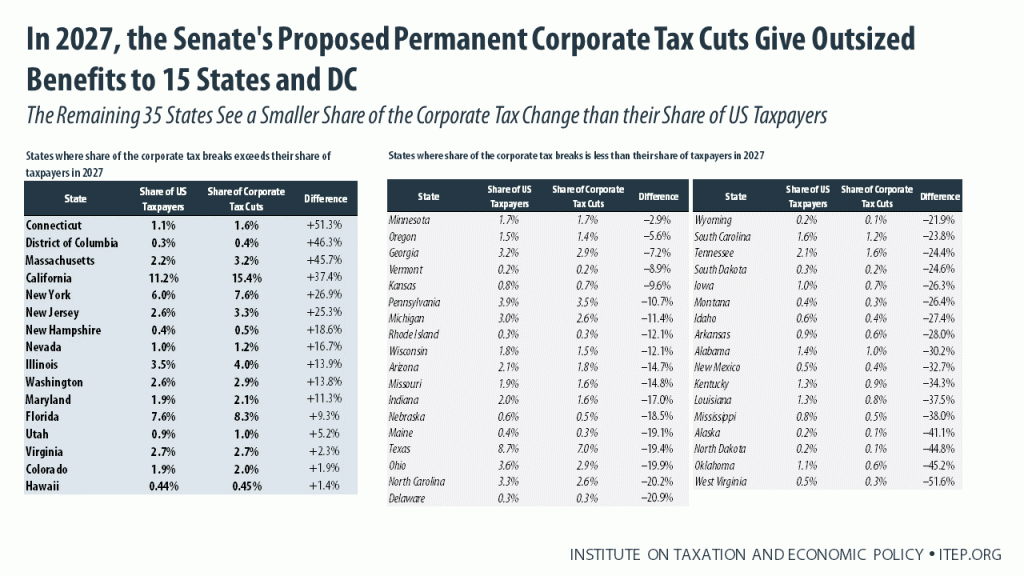
The centerpiece of the House and Senate tax plans is a major tax cut for profitable corporations that the American public does not want, and that will overwhelmingly benefit a small number of wealthy investors living in traditionally “blue” states. New ITEP research shows that poorer states such as West Virginia, Oklahoma, Alabama, and Tennessee would be largely left behind by a corporate tax cut, while the lion’s share of the benefits would remain with a relatively small number of wealthy investors who tend to be concentrated in larger cities near the nation’s coasts.
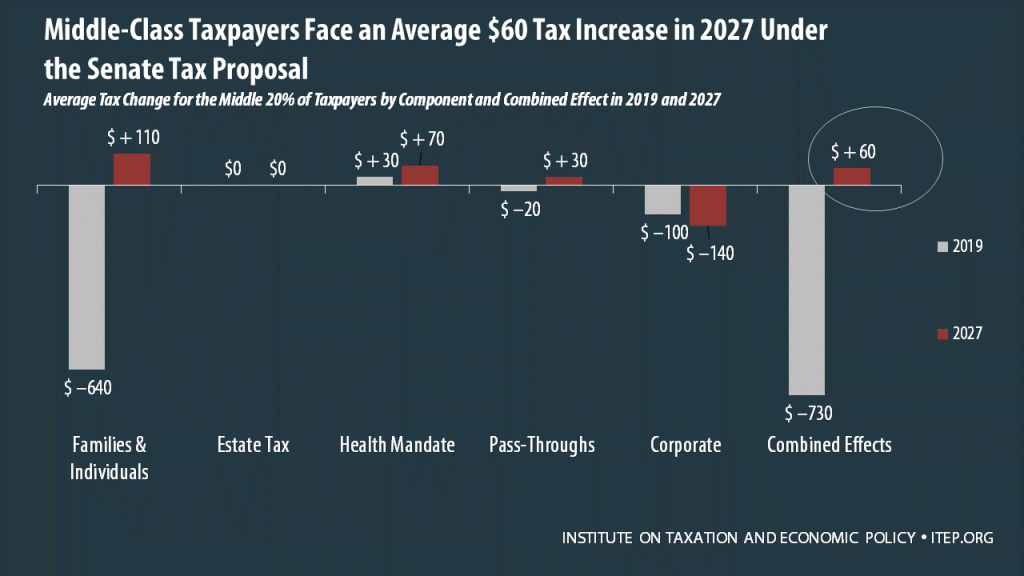
A recent ITEP study concluded that the tax bill before the Senate would raise taxes on at least 29 percent of Americans and cause the populations of 19 states to pay more in federal taxes in 2027 than they do today, while providing foreign investors with more benefits than American households. This report delves deeper by breaking out impacts of different components of the Senate tax plan on U.S. taxpayers in 2019 and 2027. This approach leads to several conclusions.
Senate Tax Plan Harms Low- and Middle-Income Kentuckians to Pay for Giveaways to Those at the Top
November 21, 2017
Senators will return to Capitol Hill next week after the Thanksgiving recess for a potential vote on their revised plan. According to estimates from the Institute on Taxation and Economic Policy (ITEP), the bottom 60 percent of Kentuckians, who make an average of $37,500 a year, will actually face more taxes from the plan with an average increase of $80 in 2027.
How the Revised Senate Tax Bill Will Affect North Dakota Residents’ Federal Taxes
November 18, 2017 • By ITEP Staff
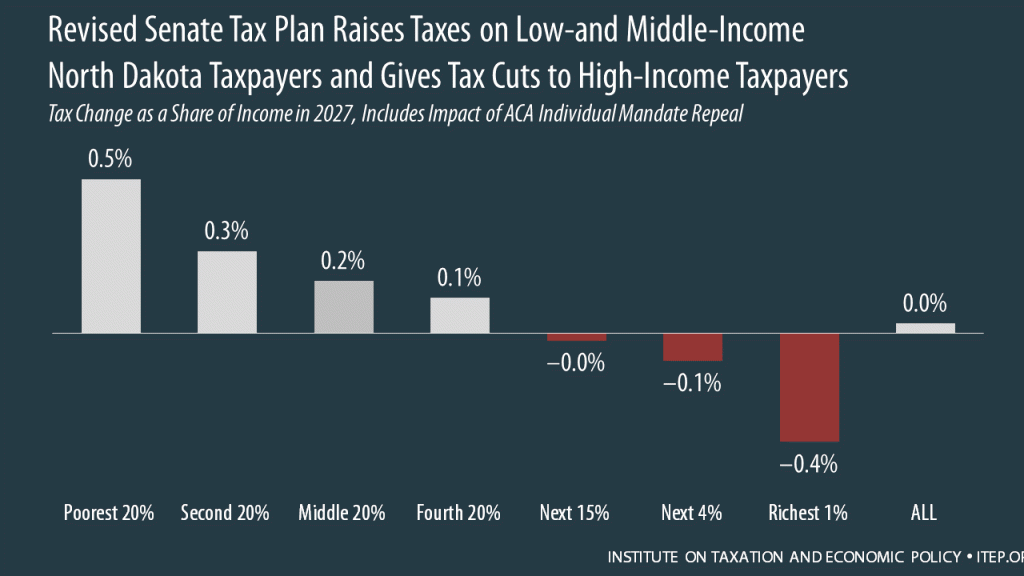
Updated November 18, 2017 The revised Senate tax plan approved by the Finance Committee on November 16th would raise taxes on many low- and middle-income families while bestowing immense benefits on wealthy Americans and foreign investors. See below for graphs showing these effects in North Dakota in 2027. Download the national and 50-state detailed tables for […]
Arizona Center for Economic Progress: Just Like the House GOP Plan, the Senate GOP Tax Plan Is Another Handout to the Wealthiest Households and Large Corporations
November 14, 2017
Newly published data shows that the new Senate GOP tax plan isn’t much better than the House GOP tax plan for the middle-class, small businesses, and lower-income Americans. The Institute on Taxation and Economic Policy analysis (https://itep.org/senatetaxplan/) shows that on average, the top 5% of Americans will receive around 50% of the tax cuts. Read […]
House Tax Bill Would Put Property Tax Deduction Out of Reach for Most Households
November 13, 2017 • By ITEP Staff
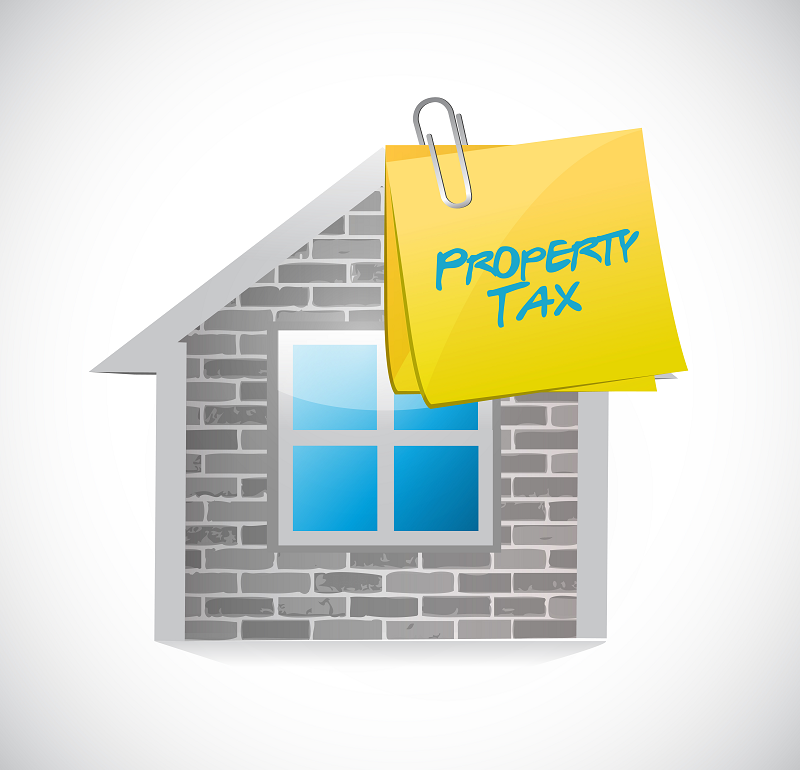
The House of Representatives is expected to vote this week on a bill that would reduce federal revenues by roughly $1.5 trillion over the next decade. Despite the bill’s high price tag, many households would pay more in federal tax if the bill is enacted, in large part because it slashes the deduction for state […]
Flawed Data from House Leadership Attempts to Hide Tax Hikes Under Proposal
November 9, 2017 • By Carl Davis

In a story published yesterday evening, Politico reported that House leaders have been “working to create customized data models” to show lawmakers that their constituents will not face a tax increase under the tax bill being debated in the House. On this point, House leaders have taken on an impossible task.
Arizona Center for Economic Progress: With Further Analysis Completed, It’s Time to Call the GOP Tax Plan What it Is: Welfare for the Wealthy
November 6, 2017
A 50-state analysis of the House tax plan released last week reveals that in Arizona the wealthiest 1% of Arizonans will receive the greatest share of the total tax cut in year one and their share would grow through 2027. And during that 10-year window, the value of the tax cut gets smaller and smaller for every […]
Trump Administration Might Propose a Long-Overdue Gas Tax Increase
October 31, 2017 • By Carl Davis

The Trump Administration is reportedly considering backing a 7-cent increase in the federal gas tax next year to pay for improvements in the nation's infrastructure. While most of the tax policy ideas coming from the administration in recent weeks would undermine the nation's ability to fund core public services, this one is a notable exception.
Trickle-Down Dries Up: States without personal income taxes lag behind states with the highest top tax rates
October 26, 2017 • By Carl Davis, Nick Buffie

Lawmakers who support reducing or eliminating state personal income taxes typically claim that doing so will spur economic growth. Often, this claim is accompanied by the assertion that states without income taxes are booming, and that their success could be replicated by any state that abandons its income tax. To help evaluate these arguments, this study compares the economic performance of the nine states without broad-based personal income taxes to their mirror opposites—the nine states levying the highest top marginal personal income tax rates throughout the last decade.
Michigan League for Public Policy: Immigrant families in Michigan: A state profile
October 18, 2017
Michigan immigrants also contribute millions in tax revenue each year, and in doing so help pay for important public programs and infrastructure in the state. In 2015 for example, undocumented immigrants in Michigan paid approximately $86.6 million in state and local taxes. Young undocumented immigrants also contribute their share in taxes. In 2015, DACA-eligible immigrants […]
Tax Foundation Updates Its Problematic Wishlist for State Tax Policy
October 18, 2017 • By Carl Davis
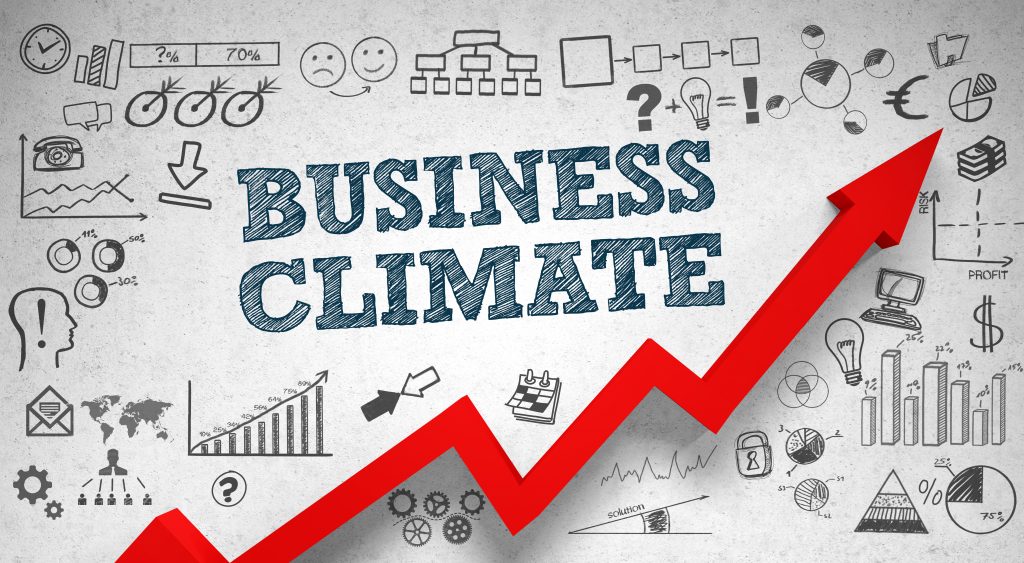
This week the Tax Foundation published its 2018 State Business Tax Climate Index, or as University of Iowa economist Peter Fisher has nicknamed it, the “Waste of Time Index.”
Poverty is Down, But State Tax Codes Could Bring It Even Lower
September 15, 2017 • By Misha Hill

The U.S. Census Bureau released its annual data on income, poverty and health insurance coverage this week. For the second consecutive year, the national poverty rate declined and the well-being of America’s most economically vulnerable has generally improved. In 2016, the year of the latest available data, 40.6 million (or nearly 1 in 8) Americans were living in poverty.
